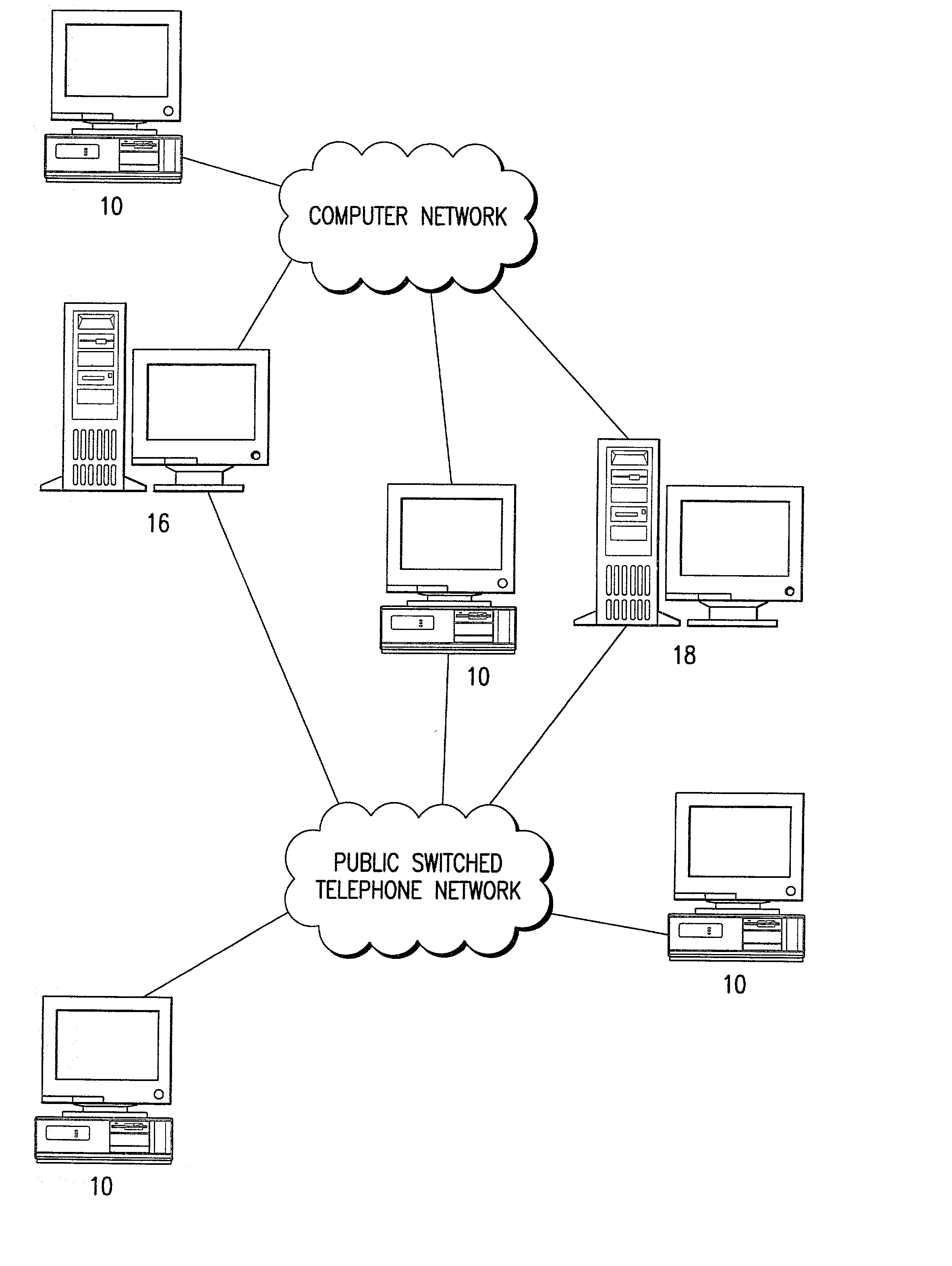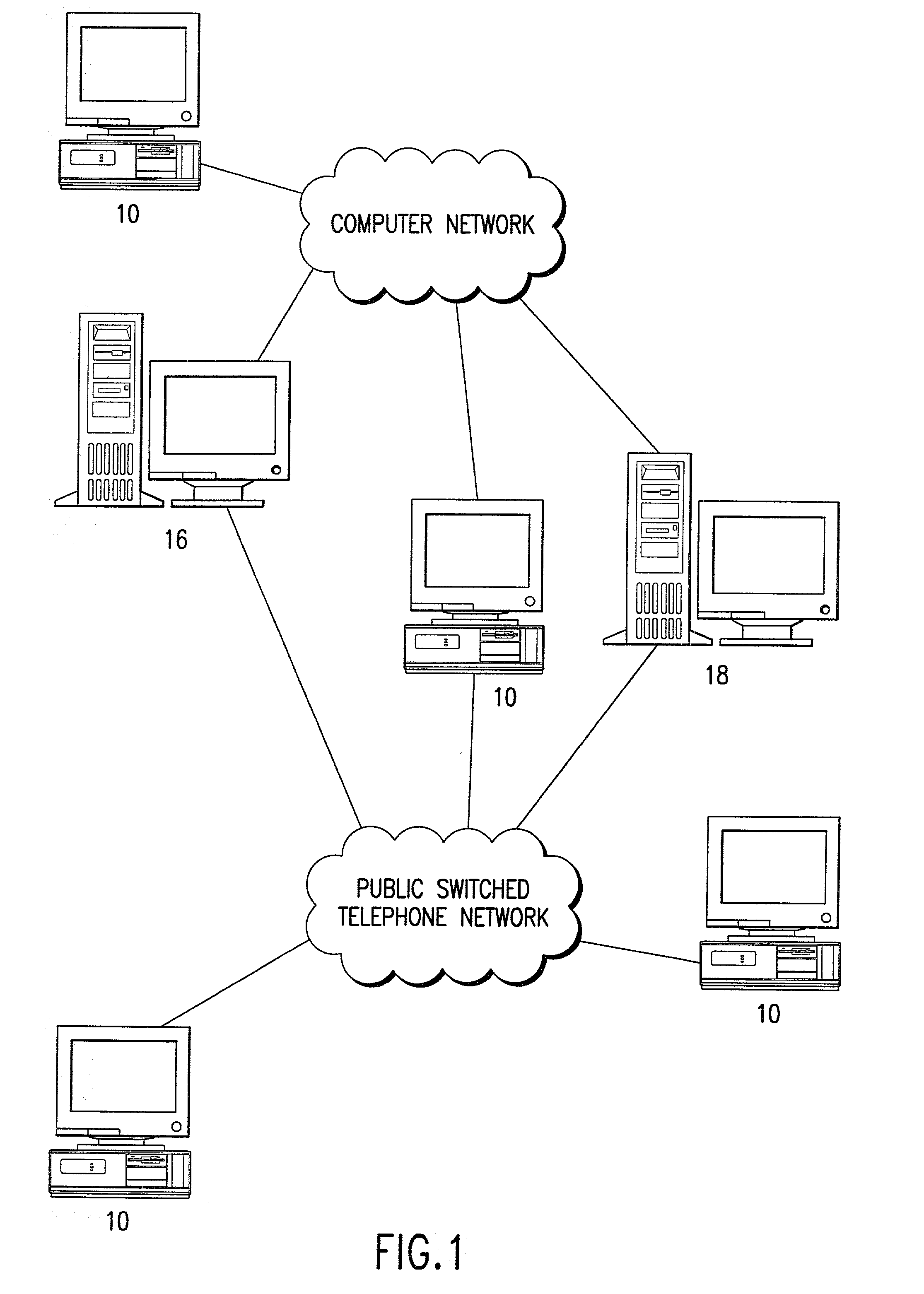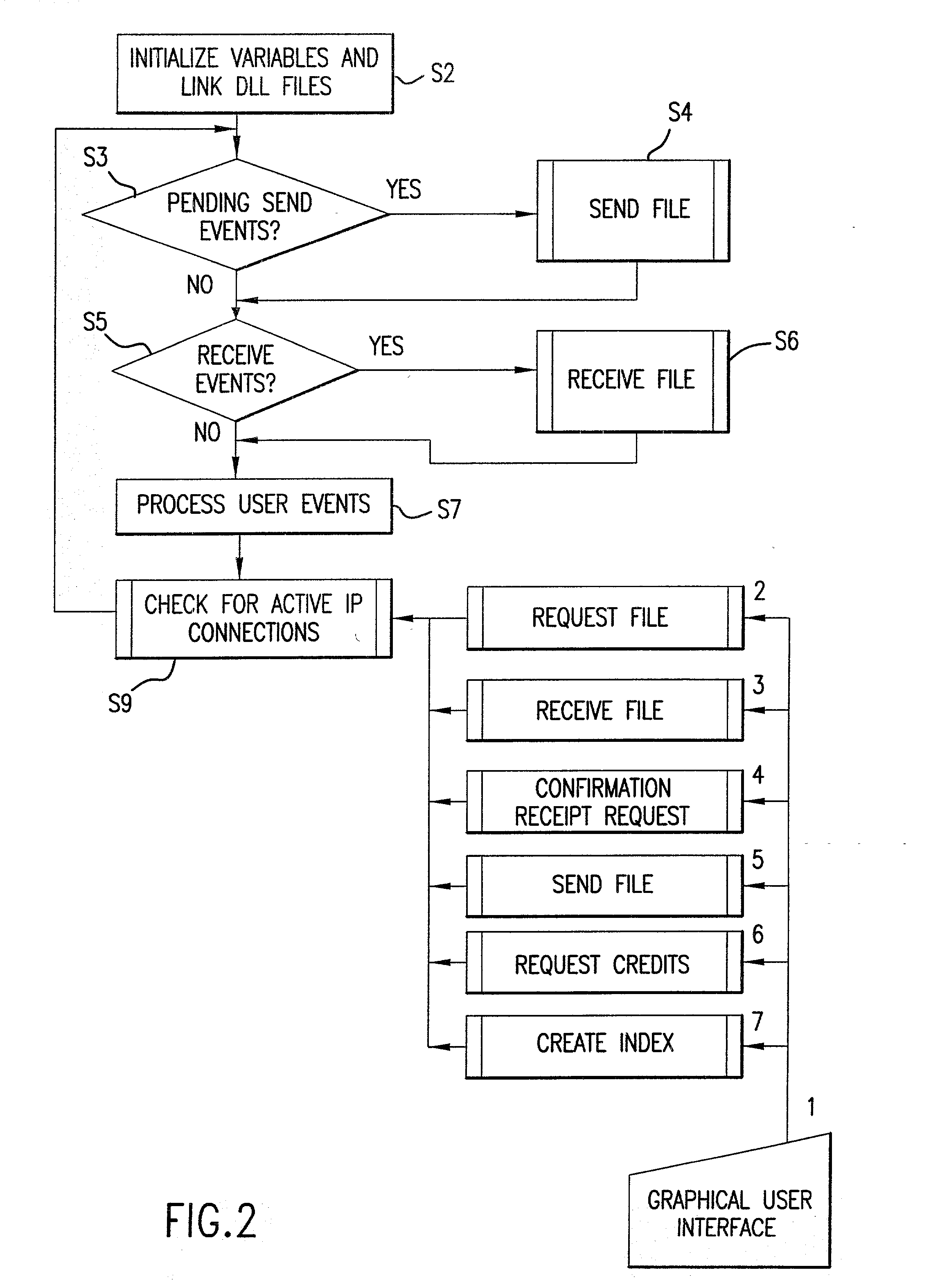File transfer system
a file transfer and file technology, applied in the field of file transfer systems, can solve the problems of reducing the relative security and timeliness of the transfer, the complex nature of these systems and the physical resources mobilized to support the expedited transfer service, and the cost of the slower express mail and delivery service to the sender
- Summary
- Abstract
- Description
- Claims
- Application Information
AI Technical Summary
Benefits of technology
Problems solved by technology
Method used
Image
Examples
Embodiment Construction
[0082] Referring now to FIG. 1, there is shown a schematic illustration of one preferred embodiment of the present invention illustrating a system architecture with a limited number of personal computers (PCs) 10 connected to communications pathways, even though any number of PCs 10 may be connected without limitation. FIG. 1 shows that the PCs 10 may be connected to and may use one communications pathway (e.g., the Internet), another communications pathway (e.g., the public switched telephone network PSTN), or more than one communications pathway (e.g., Internet and PSTN) simultaneously. The preferred embodiment of FIG. 1 includes multiple PCs 10, without limitation as to the maximum number of PCs 10. Although each PC 10 is shown to be connected to the Internet, and / or the PSTN, alternative communications pathways may be employed, such as private intranets and extranets.
[0083] Each PC 10 is preferably, but is not limited to, an "IBM compatible" x86 or Pentium class machine, connect...
PUM
 Login to View More
Login to View More Abstract
Description
Claims
Application Information
 Login to View More
Login to View More - R&D
- Intellectual Property
- Life Sciences
- Materials
- Tech Scout
- Unparalleled Data Quality
- Higher Quality Content
- 60% Fewer Hallucinations
Browse by: Latest US Patents, China's latest patents, Technical Efficacy Thesaurus, Application Domain, Technology Topic, Popular Technical Reports.
© 2025 PatSnap. All rights reserved.Legal|Privacy policy|Modern Slavery Act Transparency Statement|Sitemap|About US| Contact US: help@patsnap.com



